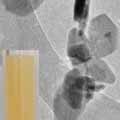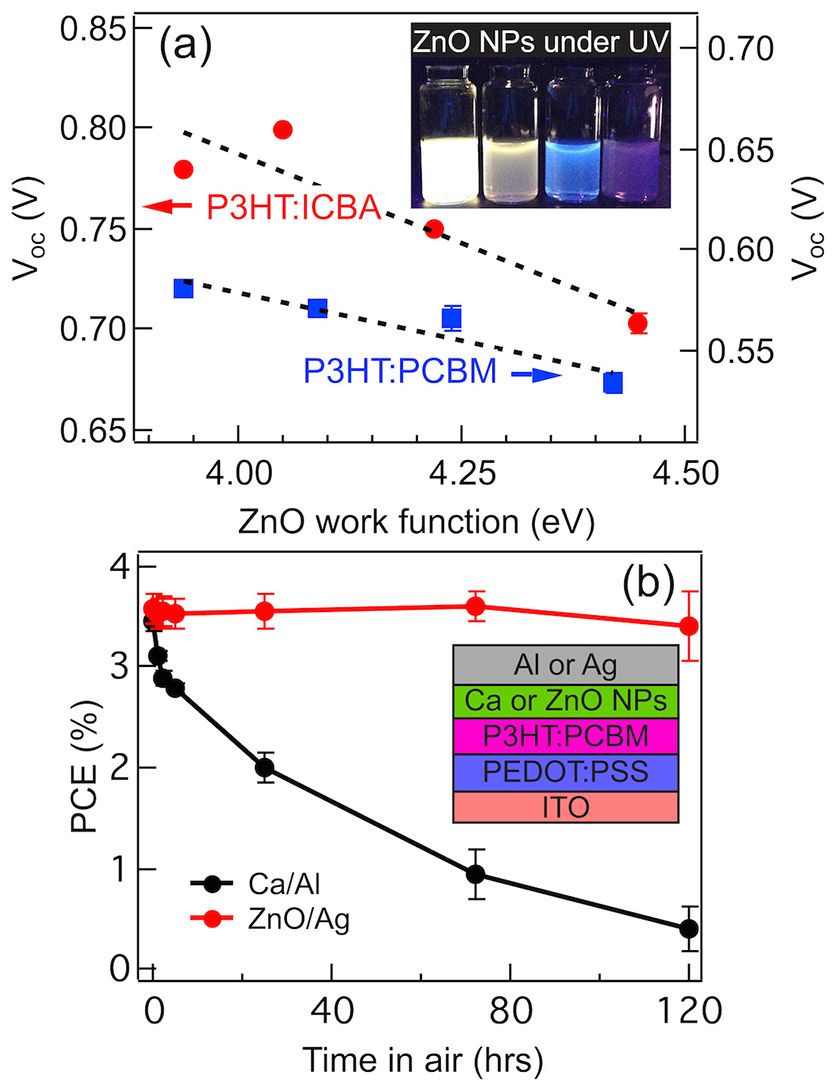Nice breakthrough.
Solution-processing methods are used to synthesize metal-oxide nanoparticle suspensions and thus realize efficient and stable devices.

Interfacial contact layers (ICLs) are thin films of semiconductors that can be inserted between the active organic layers and electrodes of organic photovoltaics (OPVs) to significantly improve the performance and stability of the devices. There are two types of ICL: hole transport layers (HTLs) and electron transport layers (ETLs) that require high-work-function p-type and low-work-function n-type semiconductors, respectively.1 As a result of these work-function requirements, a high built-in potential is established across the active layer of the OPV.1 In addition, specific carrier types can be chosen to reduce the amount of recombination in the devices (i.e., to block the minority carriers).1 To minimize losses from contact resistance and absorption, ICLs therefore need to be good electrical conductors and to be transparent to visible light.










Comments are closed.